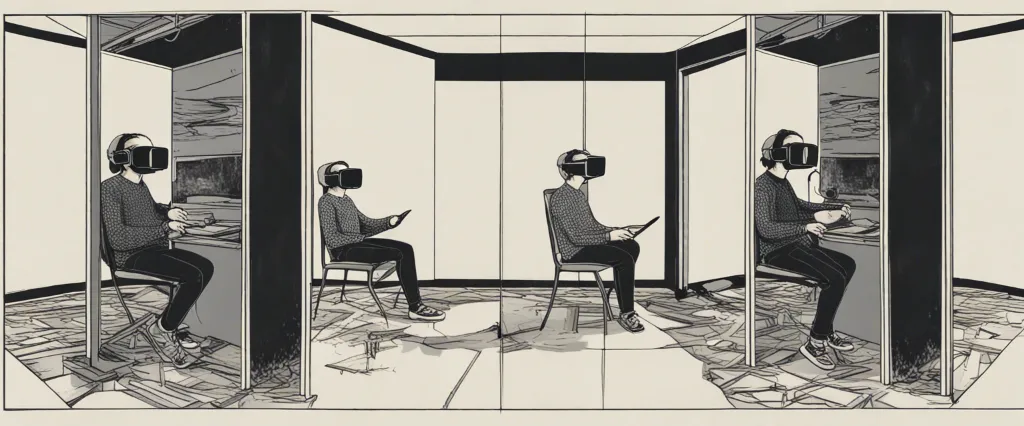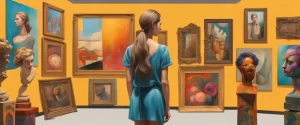
In today’s technology-driven world, where virtual reality and artificial intelligence are becoming increasingly integrated into our daily lives, understanding the impact of such advancements is paramount. In the realm of literature, two captivating books provide insightful narratives on distinct but equally significant topics. “Reality is Broken” by Jane McGonigal and “Inferior” by Angela Saini delve deep into contrasting aspects of human existence – the future of gaming and the persistent question of gender inequality, respectively. Through their distinct perspectives and comprehensive research, both authors shed light on critical issues and offer thought-provoking insights into the human experience.
Jane McGonigal’s “Reality is Broken” challenges conventional notions of gaming by exploring its transformative potential in addressing real-world problems. As a renowned game designer and researcher, McGonigal masterfully examines the psychological and sociological implications of gaming. She posits that games can act as powerful tools for motivation, problem-solving, and collaboration, with the potential to enhance our personal well-being and collective resilience. Drawing from a wide array of case studies and scientific sources, McGonigal illustrates how the mechanics of gaming can be harnessed to create positive change in numerous domains, such as education, health, and even addressing climate change. By presenting a compelling argument for the transformative power of gaming, McGonigal challenges our preconceptions and prompts us to reconsider our relationship with this increasingly pervasive form of entertainment.
On the other end of the spectrum, Angela Saini’s “Inferior” critically examines gender inequality from scientific and cultural perspectives, unveiling the deeply ingrained biases and stereotypes that persist in shaping our understanding of women. Through meticulous research and extensive interviews with scientists, Saini dismantles long-held theories and misconceptions about female abilities and behavior. She argues that a substantial portion of scientific literature has been heavily influenced by societal constructs, leading to flawed assumptions about women’s intellectual and physical capabilities. Saini compellingly argues against the notion of innate gender differences, ascribing disparities instead to social conditioning and an inherent bias within scientific communities. By illuminating the impact of gender bias in science and society, Saini reveals the urgent need for a more inclusive and objective understanding of human capabilities.
Although “Reality is Broken” and “Inferior” seemingly explore disparate topics, they converge in their exploration of the potential for societal change. McGonigal’s optimism about harnessing gaming as a force for good harmonizes with Saini’s call for greater gender equality. Both authors present their arguments with meticulous research, putting forth compelling narratives that challenge our preconceived notions and inspire critical thinking. By analyzing the transformative power of gaming and the impact of gender biases, McGonigal and Saini invite us to envision a more equitable future, one in which individuals can thrive and contribute to a better society, irrespective of their gender or interests.
In this comparative study, we will examine the unique perspectives presented in “Reality is Broken” and “Inferior” within the larger context of technological advancements and social issues. By critically analyzing the arguments made by McGonigal and Saini, we aim to understand the implications of gaming and gender bias in broader societal contexts and explore potential areas of overlap. Through this exploration, we seek to expand our understanding of human dynamics in an era where virtual realities and gender disparities persist, ultimately striving toward a more inclusive and enlightened future.
Brief Summary of Two Books
Reality is Broken by Jane McGonigal
“Reality is Broken” by Jane McGonigal is a non-fiction book that explores how video games can positively impact our lives. The book argues that the virtual world of games provides us with experiences and challenges that are often lacking in the real world, making them more engaging and fulfilling. McGonigal believes that by harnessing the power of video games, we can solve real-world problems and lead happier, more meaningful lives.
The book points out several key aspects of games that make them so compelling, such as clear goals, immediate feedback, a sense of progress, and social connections. McGonigal suggests that these elements can be implemented in various areas of our lives, such as education, work, and personal development, to increase motivation and improve problem-solving skills.
Furthermore, “Reality is Broken” addresses the misconception that games are a waste of time and argues that they can be used as a tool to tackle real-world challenges, including poverty, global warming, and mental health. McGonigal presents examples of how games have been successfully used in various contexts, highlighting the positive impact they can have on individuals and communities.
Overall, the book encourages readers to embrace the potential of games and use their principles to create a more fulfilling and purposeful reality. By understanding and harnessing the power of games, we can actively work towards making our world a better place.
Inferior by Angela Saini
Inferior” by Angela Saini is a thought-provoking exploration of gender biases in science and society. Saini challenges long-held beliefs about women and their supposed intellectual and biological inferiority. She delves into various scientific fields, including anthropology, psychology, and biology, to debunk myths about gender differences and to highlight the ways in which these beliefs have affected women’s lives.
Saini examines how cultural and societal biases have influenced scientific research, leading to biased interpretations that perpetuate the idea of women’s inferiority. She explores studies that have traditionally been used to make generalizations about male and female cognitive abilities, such as IQ tests, and demonstrates how flawed methodologies and preconceived notions have skewed results in favor of men. Saini also exposes the historical misrepresentation of female biology, specifically debunking the notion that women are inherently intellectually and physically weaker.
The author further explores how gender inequality has shaped women’s experiences in various professional fields. She uncovers the discrimination women face in academia and the scientific community, where their contributions have often been overlooked or discredited. Saini also investigates the disparities in healthcare, technology, and other aspects of society that have stemmed from these biased beliefs.
Through extensive research and interviews with a wide range of experts, Saini challenges the widely accepted notion of male superiority in intelligence and capability. She aims to dismantle the stereotypes that have limited women’s potential and argues for a more inclusive and accurate understanding of gender in scientific research and societal structures. “Inferior” calls for a critical examination of the scientific narrative regarding gender, and urges for a future where women are neither underestimated nor undervalued.
Comparison between Two Books

Similarities in Social Change
In both “Reality is Broken” by Jane McGonigal and “Inferior” by Angela Saini, the authors explore the concept of social change and its potential for shaping a better future. Although these books belong to different genres and cover distinct subjects, they share commonalities in their discussion of social change.
1. Focus on Empowerment: Both books emphasize the need for empowering individuals and communities to drive social change. McGonigal argues that gaming can be a powerful tool for empowering individuals to tackle real-world challenges, while Saini highlights the importance of empowering women by debunking long-held myths about female inferiority. Both authors advocate for encouraging individuals to take an active role in shaping a better society.
2. Addressing Inequality: Both authors acknowledge the existence of various forms of inequality within society. McGonigal explores how gaming can be used to bridge social divisions by fostering empathy and collaboration among players. Similarly, Saini delves into the gender inequalities that persist in various aspects of life, such as education, work, and healthcare. By shedding light on these inequalities, both books aim to inspire social change that tackles and diminishes such disparities.
3. Challenging Status Quo: Both authors encourage readers to question and challenge the prevailing norms, systems, and structures that may hinder social progress. McGonigal suggests that embracing alternate realities through gaming can lead to a paradigm shift in how we approach societal issues. Saini challenges ingrained biases and stereotypes, urging readers to reject the limiting beliefs that hold certain groups back. The books not only critique the status quo but also provide practical strategies for positive change.
4. Collaboration and Community Building: Another similarity between the two books is the emphasis on collaboration and community building as catalysts for social change. McGonigal promotes the idea of harnessing collective intelligence and collaborative efforts within gaming communities to address real-world problems effectively. Similarly, Saini highlights the importance of building supportive networks and fostering cooperation among marginalized groups to challenge societal inequalities. Both authors argue that social change can be achieved through collective action and the creation of supportive communities.
Overall, despite covering different subjects and approaches, “Reality is Broken” and “Inferior” converge in their examination of social change. Both books underscore the significance of empowerment, addressing inequality, challenging the status quo, and fostering collaboration and community building as key components for driving positive transformation within society.
Divergences in Social Change
Reality is Broken by Jane McGonigal and Inferior by Angela Saini both discuss important issues related to social change, but they diverge in their focus and perspectives. While both books address the need for change, they tackle different aspects of society and offer contrasting solutions.
Reality is Broken centers on the concept of harnessing the power of games to solve real-world problems. McGonigal argues that games, with their ability to engage and motivate participants, can be a potent tool for addressing social challenges. She highlights examples of how gaming communities have come together to tackle issues such as climate change, poverty, and political apathy. McGonigal believes that by embracing the principles of game design, we can create a more satisfying and fulfilling reality.
On the other hand, Inferior’s primary focus is on gender inequality, particularly in the field of science. Saini explores the historical and cultural underpinnings of the alleged intellectual inferiority of women and debunks many misconceptions. She highlights the systemic bias and discrimination that continue to hinder the progress of women in scientific fields. Saini’s book aims to challenge societal norms and prejudices, advocating for a more equal and inclusive society where women are not held back by stereotypes or limited opportunities.
In terms of social change, Reality is Broken promotes a bottom-up approach, encouraging individuals to take action and make a difference within their communities through gamification. McGonigal’s premise is that by engaging in game-like experiences, people can find the motivation, collaboration, and creativity necessary to effect change. She emphasizes that everyone has the capacity to be a “super-empowered hopeful individual” who can initiate transformative social movements.
Contrastingly, Inferior adopts a more top-down approach, aiming to raise awareness and challenge societal structures and institutions. Saini argues that society as a whole needs to address and rectify the biases, stereotypes, and systemic hurdles that hinder women’s progress. She calls for policy changes, educational reform, and an overhaul of societal attitudes to create equal opportunities and dismantle the barriers faced by women in science.
In conclusion, while both Reality is Broken and Inferior acknowledge the need for social change, they differ in their focus and proposed solutions. McGonigal promotes the potential of gamification and individual empowerment to effect change, while Saini emphasizes the importance of societal-level reform to address gender inequality. These diverging perspectives provide readers with different avenues for tackling social challenges and reshaping our reality.

Conclusion
Both Reality is Broken by Jane McGonigal and Inferior by Angela Saini are highly acclaimed books on their respective topics.
Reality is Broken explores the potential of using game design principles to solve real-world problems, addressing issues such as the lack of engagement in traditional systems and the potential benefits of using the immersive nature of games to create positive change. McGonigal discusses the ways in which gaming can be harnessed to enhance mental well-being, improve social connections, and solve global challenges. This book offers a fresh perspective on the potential of gaming and may be particularly appealing to those interested in psychology, technology, and social impact.
On the other hand, Inferior examines the prevalent myths and biases surrounding women and their abilities, especially in the field of science. Angela Saini meticulously delves into scientific research, challenging the long-held assumptions about gender differences and debunking the idea that women are inherently inferior. This book sheds light on the societal factors that contribute to the marginalization of women in various fields and highlights the importance of providing equal opportunities and recognizing the abilities of all genders. Inferior is particularly relevant to individuals interested in feminism, gender studies, and the sociology of science.
Both books offer valuable insights into different aspects of our society and have been critically acclaimed. The choice between them would ultimately depend on your personal interests and which topic you find more compelling.



